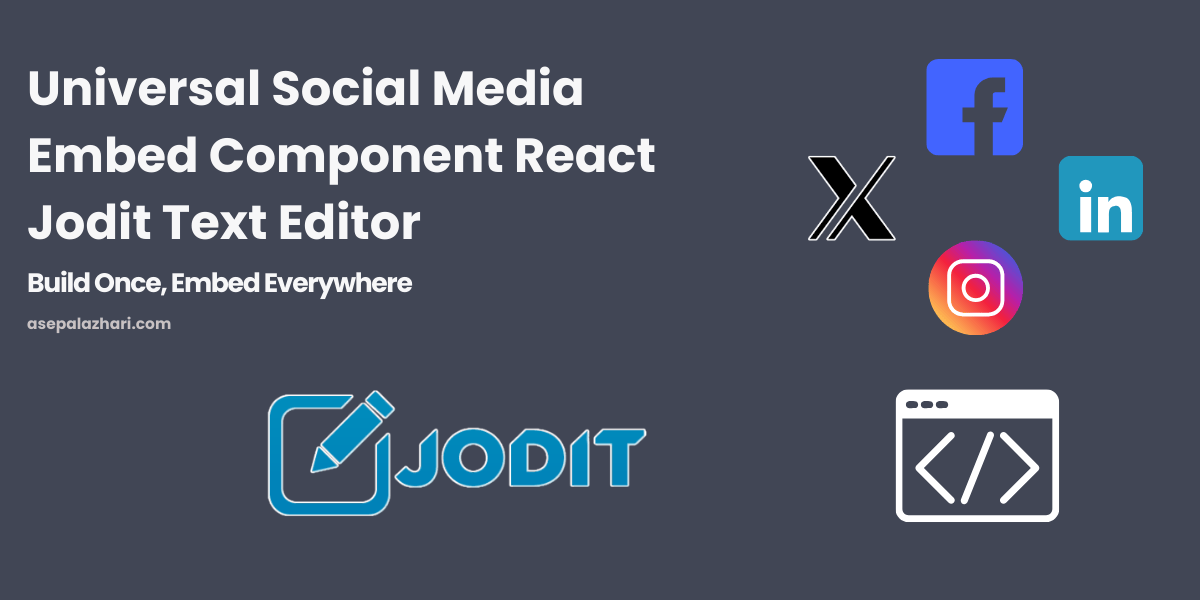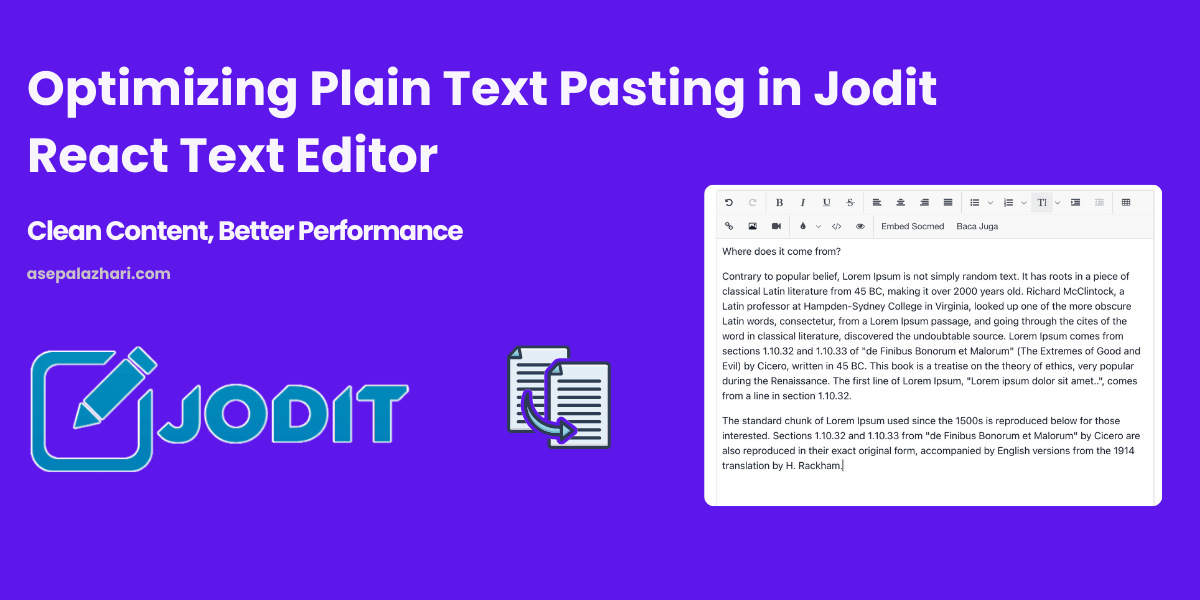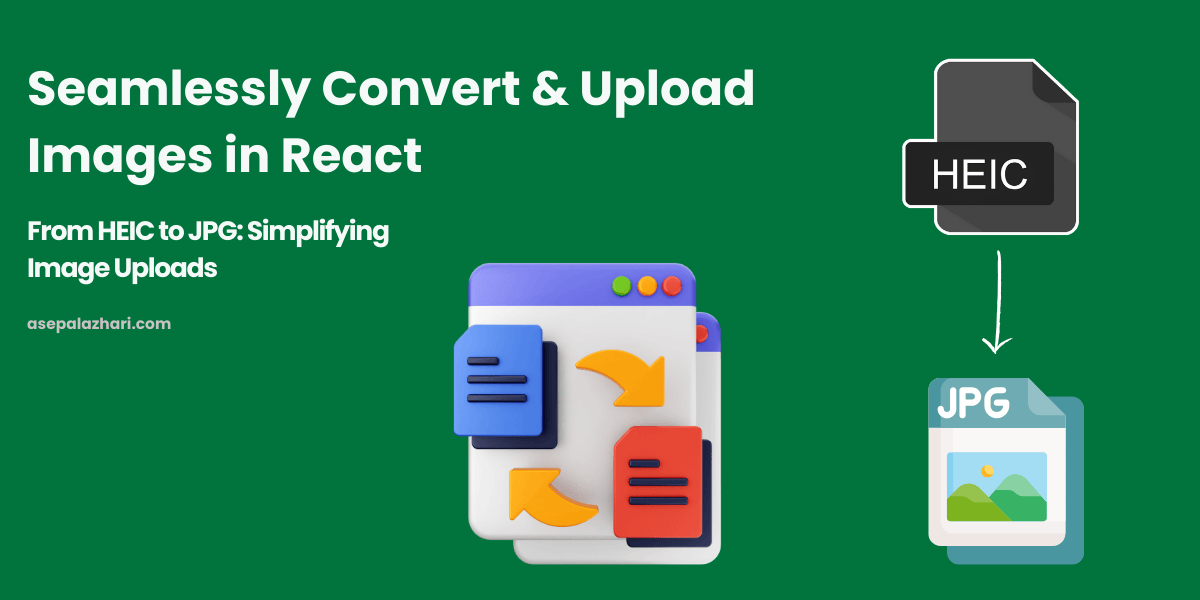Building a Universal Social Media Embed Component in React Jodit
Learn how to create a reusable React component for embedding content from multiple social media platforms like X, Instagram, and LinkedIn. Features TypeScript support, loading states, and error handling

In today’s interconnected digital landscape, integrating social media content into web applications has become a crucial requirement for many projects. Whether you’re building a content management system, a blog platform, or a news website, the ability to seamlessly embed social media posts can significantly enhance user engagement and content richness.
The Challenge of Social Media Embedding
When I first faced the task of implementing social media embeds across multiple platforms, I quickly realized that each platform had its own unique implementation requirements, loading patterns, and initialization needs. What started as a simple feature request soon became a complex juggling act of managing different script loading strategies, handling platform-specific callbacks, and maintaining a consistent user experience.
This is where the idea for a universal social media embed component was born – a single, reusable solution that could handle multiple platforms while providing a smooth, user-friendly experience.
Also Read: Best Text Editors for React: CKEditor vs TinyMCE vs Jodit
Why Create a Universal Embed Component?
Before diving into the implementation, let’s understand the key benefits of creating a universal embed component:
- Consistency: A unified interface for embedding content from any supported platform
- Maintainability: Centralized error handling and loading states
- Type Safety: Full TypeScript support for better development experience
- User Experience: Smooth loading states and error feedback
- Extensibility: Easy to add support for new platforms
Additionally, we will explore how to integrate this custom embed component as a plugin within the Jodit Editor for React, enhancing content creation workflows.
Key Features
- Platform Agnostic: Seamlessly embeds content from multiple social media platforms.
- TypeScript Support: Ensures robust type checking.
- Loading States: Enhances user experience by indicating content loading status.
- Error Handling: Manages API errors gracefully.
- Jodit Editor Integration: Enables embedding directly within a rich text editor.
Prerequisites
- Basic understanding of React and TypeScript.
- Familiarity with social media API integration.
- Experience with Jodit Editor is helpful but not required.
Also Read: Add Header in Image Next.js: A Comprehensive Guide
Project Setup
Step 1: Create a New React Project
npx create-react-app social-media-embed --template typescript
cd social-media-embedStep 2: Install Required Packages
You’ll need to install Axios for API requests and Jodit Editor:
npm install axios jodit-reactStep 3: Component Structure
Create a SocialMediaEmbed.tsx file in the src/components directory:
import React, { useState, useEffect } from "react";
import axios from "axios";
interface EmbedProps {
url: string;
}
const SocialMediaEmbed: React.FC<EmbedProps> = ({ url }) => {
const [content, setContent] = useState<string | null>(null);
const [loading, setLoading] = useState(true);
const [error, setError] = useState<string | null>(null);
useEffect(() => {
const fetchContent = async () => {
try {
const response = await axios.get(
`https://api.embed-service.com?url=${encodeURIComponent(
url
)}`
);
setContent(response.data.html);
} catch (err) {
setError("Failed to load content.");
} finally {
setLoading(false);
}
};
fetchContent();
}, [url]);
if (loading) return <p>Loading...</p>;
if (error) return <p>{error}</p>;
return <div dangerouslySetInnerHTML={{ __html: content || "" }} />;
};
export default SocialMediaEmbed;Step 4: Integrating with Jodit Editor
To use this component as a custom plugin in Jodit Editor, create a custom button that inserts the embed component.
Jodit Plugin Example
import React from "react";
import JoditEditor from "jodit-react";
import SocialMediaEmbed from "./SocialMediaEmbed";
const EditorWithEmbedPlugin: React.FC = () => {
const editorConfig = {
toolbarButton: ["embed"],
buttons: [
{
name: "embed",
iconURL:
"https://icon-library.com/images/embed-icon/embed-icon-16.jpg",
exec: (editor: any) => {
editor.selection.insertHTML(
'<div id="embed-placeholder"></div>'
);
},
},
],
};
return (
<JoditEditor
config={editorConfig}
onChange={(newContent) => console.log(newContent)}
/>
);
};
export default EditorWithEmbedPlugin;Conclusion
This component provides a simple yet powerful solution for embedding social media content in your React applications and integrating it as a custom plugin for Jodit Editor. With support for TypeScript, loading states, and error handling, it ensures a seamless user experience.
Remember that social media platforms frequently update their embedding mechanisms, so it’s important to keep your implementation up to date with the latest platform changes and requirements.


